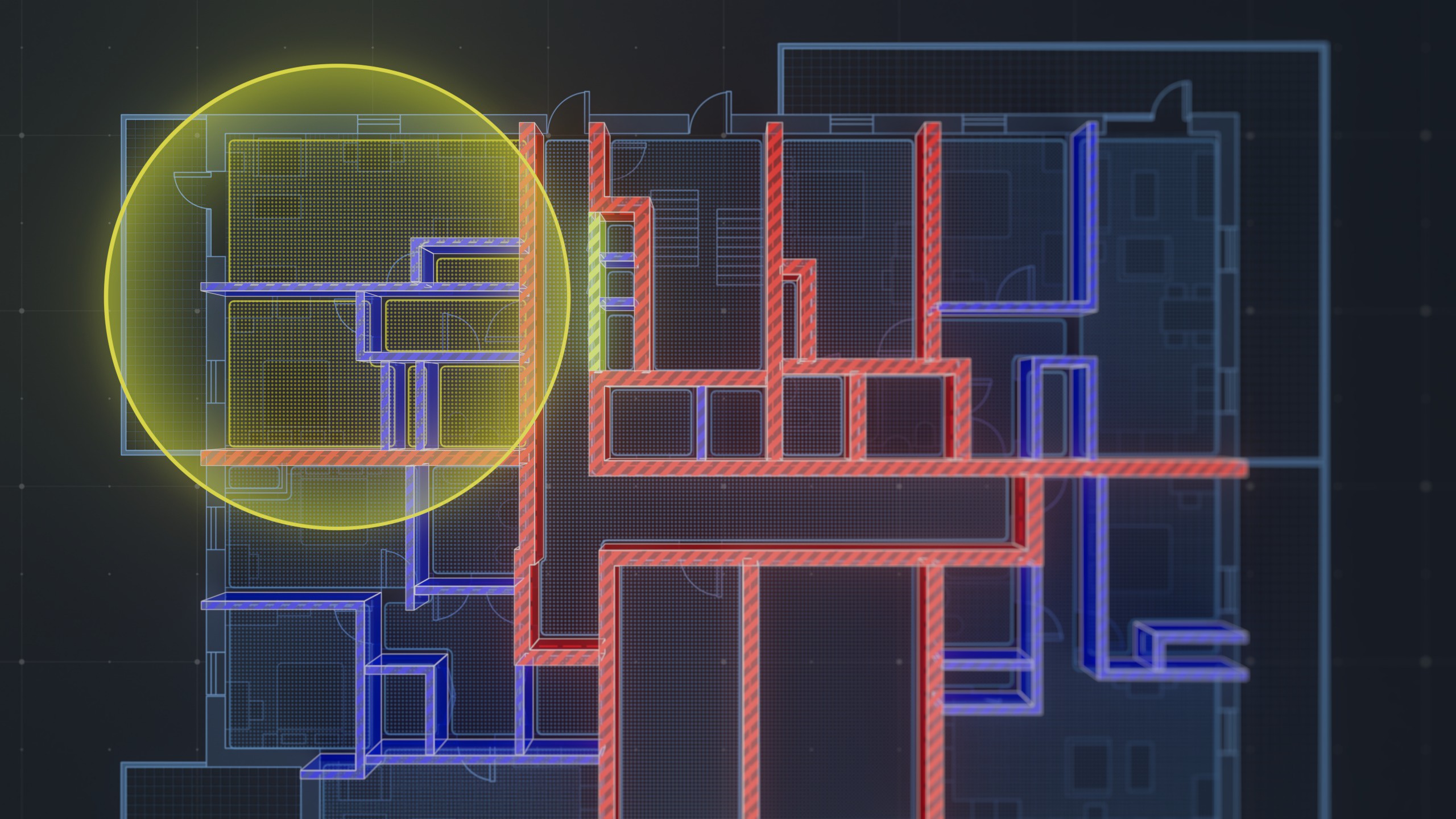In the world of construction, efficiency and organization play crucial roles in successful project completion. Bills of Material (BOM) are essential tools that aid construction professionals in achieving these objectives. This article delves into the concept of Bills of Material in construction, their significance, and how they contribute to project management and execution.
At its core, a Bill of Material (BOM) is a comprehensive and itemized list of all the materials, components, parts, and assemblies required to construct a particular structure or complete a construction project. It serves as a detailed inventory, outlining the quantity, description, and specifications of each item necessary for the successful execution of the project. BOMs are commonly utilized in various construction disciplines, such as residential, commercial, industrial, and infrastructure development.
The significance of Bills of Material in construction cannot be overstated. They play a crucial role in streamlining the entire construction process and ensuring the project's success. The primary purposes of BOMs are as follows:
- Efficient Planning and Scheduling: BOMs facilitate project planning and scheduling by providing a clear outline of the materials needed at each stage of construction. This helps construction managers to coordinate tasks effectively, optimize resource allocation, and minimize downtime.
- Accurate Cost Estimation: With detailed BOMs, construction professionals can accurately estimate the overall project cost. This information is invaluable for budgeting, cost control, and ensuring the project remains financially viable.
- Procurement Management: BOMs simplify the procurement process by providing a comprehensive list of materials required. It helps construction teams in sourcing materials, negotiating with suppliers, and avoiding delays caused by material shortages.
- Quality Control: BOMs enable better quality control, as they specify the exact materials to be used in the project. Using the right materials ensures the structural integrity and longevity of the construction.
- Improved Site Organization and Productivity: Having a well-prepared BOM allows for better organization on the construction site. It helps prevent unnecessary clutter and minimizes the risk of errors due to using incorrect materials.
BOM Meaning
Bills of Material (BOM) in the construction industry refer to comprehensive and detailed lists that itemize all the materials, components, parts, and assemblies required for a specific construction project. These lists serve as a blueprint, guiding construction professionals through the procurement and assembly process. BOMs are essential tools that ensure smooth project execution, cost control, and quality management.
The concept of BOMs is rooted in the need for organized and systematic construction practices. By breaking down a project into its constituent parts, BOMs enable precise planning, accurate cost estimation, and effective resource management. BOMs are not limited to large-scale projects; they are also utilized in smaller construction tasks, from building a single structure to installing complex systems within a building.
Components of a Typical BOM
A typical BOM for a construction project contains several key components:
- Item Description: Each item in the BOM is described in detail, including its name, code, or identification number. This ensures clarity and consistency when communicating about the materials.
- Quantity: The quantity of each item required for the project is specified to ensure accurate procurement and resource allocation.
- Specifications: BOMs include specific details and technical specifications for each item, such as size, dimensions, material type, grade, and any other relevant characteristics.
- Part Numbers: For larger projects or those involving complex systems, using unique part numbers for each item helps simplify identification and tracking.
- Unit of Measurement: The unit of measurement (e.g., meters, kilograms, pieces) is indicated for each item to facilitate accurate ordering and inventory management.
- Source or Supplier: BOMs may include information about the preferred source or supplier for each item, helping streamline the procurement process.
- Assembly Information: In projects involving assemblies or sub-components, BOMs may provide details on how different items come together.
- Revisions and Dates: BOMs are subject to updates throughout a project's lifecycle. Including revision information and dates ensures that the latest version is always referenced.
Different Types of BOMs in Construction
In construction, various types of BOMs cater to different project needs. Some common types include:
- Bill of Materials (BOM) by Stage: This type of BOM organizes materials based on the construction stages, such as foundation, framing, electrical, plumbing, and finishing. It helps manage resources efficiently as the project progresses.
- Bill of Materials (BOM) by Area or Location: BOMs can be structured to group materials according to specific locations or areas within the construction site. This aids in organizing deliveries and simplifies on-site management.
- Bill of Materials (BOM) by System: For projects involving complex systems (e.g., HVAC, electrical, or plumbing), BOMs can be categorized by system to ensure all necessary components are accounted for.
- Master Bill of Materials: This all-encompassing BOM includes every material required for the entire project, serving as a comprehensive reference.
Understanding the different types of BOMs allows construction professionals to choose the most suitable approach for their specific projects and enhances overall project efficiency and success.
Role of Bills of Material in Construction Projects
Bills of Material (BOMs) are invaluable tools that significantly contribute to efficient project planning and scheduling in the construction industry. Here's how BOMs facilitate these essential aspects:
- Task Sequencing: By providing a detailed list of materials required for each construction stage, BOMs enable construction managers to determine the proper sequencing of tasks. This ensures that materials are available when needed, minimizing delays and idle time.
- Resource Allocation: BOMs assist in allocating resources effectively by outlining the quantity and type of materials needed. This enables project managers to plan for the right amount of labor and equipment required at each stage.
- Time Management: With a clear understanding of the materials needed at different stages, construction teams can develop realistic timelines for completing tasks. BOMs help in setting achievable milestones and tracking progress throughout the project.
- Identifying Critical Paths: BOMs help identify critical paths, which are sequences of tasks that must be completed on time to prevent project delays. By knowing which materials are essential for these critical tasks, construction teams can prioritize procurement and delivery.
Accurate Bills of Material are fundamental for precise cost estimation, which is a critical aspect of construction project management. Here's why accurate BOMs are essential for cost estimation:
- Cost Transparency: Detailed BOMs provide clarity regarding the quantity and type of materials required for the project. This transparency allows for accurate cost breakdowns, helping stakeholders understand the project's financial scope.
- Budget Planning: Accurate BOMs enable construction professionals to create realistic budgets based on the actual materials needed. This helps avoid cost overruns and ensures that the project remains financially viable.
- Bid Proposals: For contractors submitting bids for construction projects, accurate BOMs are crucial for providing competitive and reliable cost estimates. Winning bids require precise calculations, and BOMs play a pivotal role in achieving this.
- Change Order Management: During a project, changes may occur due to unforeseen circumstances. Accurate BOMs facilitate effective change order management by providing a clear basis for assessing cost adjustments resulting from changes in materials.
Efficient procurement is essential for successful project execution, and BOMs play a significant role in streamlining these processes:
- Material Ordering: BOMs provide a comprehensive list of required materials, making it easier for procurement teams to place orders with suppliers promptly and accurately.
- Bulk Ordering and Discounts: With BOMs specifying the exact quantities needed, construction teams can take advantage of bulk ordering, leading to potential cost savings through discounts.
- Vendor Evaluation: BOMs help in evaluating potential vendors and suppliers based on their ability to provide the required materials at competitive prices and within the necessary timeframe.
- Inventory Management: BOMs aid in managing inventory by ensuring that materials are ordered as needed, reducing excess stock and minimizing storage costs.
Construction site organization and productivity are improved through the effective utilization of BOMs:
- Material Storage: BOMs guide site managers in arranging material storage to keep materials organized and easily accessible, reducing the risk of loss or damage.
- Material Tracking: By cross-referencing materials received with the BOM, site managers can accurately track inventory and usage, preventing theft and unnecessary waste.
- Resource Optimization: With BOMs, construction teams can plan material usage efficiently, reducing the need for multiple trips to suppliers and optimizing labor productivity.
- Reduced Rework: Accurate BOMs help prevent errors and ensure that the right materials are used in the correct quantities, minimizing the need for costly rework.
In conclusion, Bills of Material play a central role in construction projects, aiding project planning, cost estimation, procurement, and on-site organization. Utilizing accurate BOMs empowers construction professionals to make informed decisions, enhance productivity, and ultimately deliver successful projects.
Creating an Effective Bill of Material
Creating a comprehensive and accurate Bill of Material (BOM) requires careful planning and attention to detail. Follow this step-by-step guide to develop an effective BOM for your construction project:
- Gather Project Information: Collect all relevant project documents, including architectural and engineering drawings, specifications, and any preliminary material lists.
- Break Down the Project: Divide the construction project into manageable phases or stages. This could be based on the construction timeline, work areas, or systems involved (e.g., electrical, plumbing, finishing).
- Identify Materials Needed: For each phase or stage, determine the materials required. Consult the project documents and collaborate with relevant stakeholders, such as architects, engineers, and subcontractors, to ensure all materials are accounted for.
- List the Materials: Create a detailed list of materials for each phase, including their descriptions, quantities, specifications, and part numbers (if applicable). Ensure consistency in naming and categorization to avoid confusion.
- Research Suppliers and Costs: Research potential suppliers and obtain price quotes for the materials. Factor in any applicable discounts, bulk pricing, or special offers to get accurate cost estimates.
- Verify with Experts: Validate the BOM with subject matter experts, such as construction managers, engineers, or experienced contractors, to ensure the accuracy and completeness of the list.
- Review and Revise: Conduct a thorough review of the BOM to identify any omissions or errors. Revise the list as necessary, taking feedback from stakeholders into account.
- Add Contingencies: Account for unforeseen changes or adjustments by including contingency materials in the BOM. These can serve as a buffer against unexpected events.
- Organize the BOM: Arrange the BOM in a clear and organized format, grouping materials by phases or categories to make it easier to navigate and reference during the construction process.
- Update and Maintain: Throughout the project, keep the BOM up-to-date with any changes or revisions. Regularly communicate updates to all relevant team members to ensure everyone is working with the latest information.
To ensure accuracy and completeness in BOM creation, follow these best practices:
- Collaborate with Stakeholders: Involve all relevant stakeholders, including architects, engineers, project managers, and subcontractors, in the BOM creation process to benefit from their expertise and insights.
- Use Standardized Naming and Codes: Adopt a consistent naming convention and item coding system to streamline communication and avoid confusion during the construction process.
- Double-Check Specifications: Verify that the specifications of each material match the project requirements to prevent errors and costly replacements.
- Consider Lead Times: Take into account the lead times for material delivery when planning the construction schedule. Order critical items well in advance to avoid delays.
- Regularly Review and Update: Continuously review and update the BOM as the project progresses, ensuring it remains accurate and reflects any changes in requirements.
Challenges and Solutions with Bills of Material
Managing Bills of Material (BOMs) can present several challenges for construction professionals. Here are some common issues and their potential solutions:
- Incomplete or Inaccurate Information: Incomplete or inaccurate information in the BOM can lead to material shortages, delays, and additional costs.
- Solution: Ensure thorough communication and collaboration among all stakeholders to validate and cross-check BOM details. Regularly review and update the BOM to reflect any changes accurately.
- Coordination and Communication Issues: Lack of effective communication among team members can result in discrepancies between the BOM and actual materials on-site.
- Solution: Implement a robust project management system that fosters collaboration and real-time communication among all stakeholders. Utilize BIM platforms to link the BOM directly to digital models for seamless coordination.
- Change Management: Construction projects often undergo changes due to design revisions, scope adjustments, or unforeseen challenges, which can impact the BOM.
- Solution: Establish a well-defined change management process that includes evaluating the impact of changes on the BOM. Regularly communicate updates to all team members to ensure they are working with the latest information.
- Inventory Management: Poor inventory management can lead to material wastage, stockouts, or redundant purchases.
- Solution: Implement inventory tracking systems and adopt Just-In-Time (JIT) inventory practices to ensure materials are ordered and delivered as needed, reducing excess stock and minimizing storage costs.
Managing changes and updates in the BOM is crucial to keep the construction project on track. Here are some strategies to address these issues effectively:
- Change Control Process: Establish a change control process that includes formal procedures for evaluating, documenting, and approving changes to the BOM.
- Impact Assessment: Before implementing changes to the BOM, conduct a thorough impact assessment to evaluate the cost, schedule, and resource implications.
- Revision Tracking: Maintain a clear record of all revisions to the BOM, including the reasons for the changes and the dates they were made. This ensures accountability and provides an audit trail.
- Real-Time Collaboration: Utilize cloud-based BOM management systems to enable real-time collaboration among team members. This ensures that everyone has access to the most recent version of the BOM, reducing the risk of working with outdated information.
- Change Review Meetings: Conduct regular change review meetings with key stakeholders to discuss proposed changes to the BOM, assess their feasibility, and obtain consensus before implementation.
- Communication and Training: Communicate any BOM changes promptly to all relevant team members, and provide necessary training to ensure they understand the implications of the revisions.
- Documentation and Archiving: Keep all versions of the BOM, including previous revisions, well-organized and easily accessible for future reference and audit purposes.
By proactively addressing challenges related to BOM management and implementing effective change control processes, construction professionals can ensure that BOMs remain accurate and up-to-date throughout the project, contributing to the overall success of the construction endeavor.
BOM and Sustainable Construction
In an era where environmental concerns are paramount, Bills of Material (BOMs) play a vital role in promoting sustainable construction practices. By incorporating sustainable materials and practices in BOMs, BOMs can contribute to waste reduction and recycling efforts, resulting in more eco-friendly construction projects. This section explores the connection between BOMs and sustainable construction.
- Material Selection: BOMs offer an opportunity to prioritize the use of sustainable materials, such as recycled content, locally sourced materials, and renewable resources. By including sustainable options in the BOM, construction professionals can reduce the project's overall environmental impact.
- Energy-Efficient Products: BOMs can emphasize the use of energy-efficient building components and systems, such as LED lighting, high-performance insulation, and HVAC equipment with low energy consumption. This contributes to reducing energy use during the building's operational phase.
- Low-Impact Construction Methods: BOMs can promote construction methods that minimize environmental impact, such as modular construction, which reduces waste generation, and pre-engineered building systems that optimize material use.
- Sustainable Certification Compliance: BOMs can include materials and products certified by recognized sustainability standards, such as LEED (Leadership in Energy and Environmental Design), BREEAM (Building Research Establishment Environmental Assessment Method), or Green Star, ensuring the project meets sustainable construction criteria.
How BOMs Contribute to Waste Reduction and Recycling Efforts
- Material Optimization: By carefully planning the quantity and types of materials needed through BOMs, construction professionals can optimize material use and minimize waste generation.
- Ordering Accuracy: Accurate BOMs reduce the likelihood of over-ordering materials, which can lead to excess waste and higher disposal costs.
- Waste Tracking: BOMs can include waste tracking information, allowing construction teams to monitor and manage waste throughout the project's lifecycle effectively.
- Recycling and Reuse: BOMs can promote the use of recycled materials or materials that are easy to recycle at the end of their life cycle. Additionally, BOMs can specify materials suitable for reuse or salvaging during deconstruction or renovation.
Conclusion
The importance of accurate BOMs cannot be overstated in the construction industry. They serve as a foundational element in project management, providing a clear roadmap for construction professionals to follow. From concept to completion, BOMs ensure that construction projects are executed efficiently, within budget, and with minimal waste.
Construction professionals must pay careful attention to BOM creation, ensuring that all materials are accurately listed, specifications are up-to-date, and changes are properly managed. Utilizing modern technology and software can streamline BOM management, allowing for real-time collaboration and reducing the risk of errors.
Ultimately, accurate BOMs contribute to successful construction projects by optimizing resource allocation, minimizing disruptions, and promoting sustainable practices. By prioritizing the creation and maintenance of precise BOMs, construction professionals can enhance their project's outcomes, deliver high-quality structures, and contribute to a more sustainable and responsible construction industry as a whole.




.png)